This article describes the basic knowledge of getting started with jQuery Validate form validation. The jQuery Validate plug-in provides powerful validation functions for forms, making client-side form validation easier. It also provides a large number of customization options to meet various application requirements. Demand, the following is the entire content of this article, specially shared with everyone.
1. Import js library
<script src="../js/jquery.js" type="text/javascript"></script> <script src="../js/jquery.validate.js" type="text/javascript"></script>
2. Default verification rules

3. Default prompt
messages: {
required: "This field is required.",
remote: "Please fix this field.",
email: "Please enter a valid email address.",
url: "Please enter a valid URL.",
date: "Please enter a valid date.",
dateISO: "Please enter a valid date (ISO).",
dateDE: "Bitte geben Sie ein gültiges Datum ein.",
number: "Please enter a valid number.",
numberDE: "Bitte geben Sie eine Nummer ein.",
digits: "Please enter only digits",
creditcard: "Please enter a valid credit card number.",
equalTo: "Please enter the same value again.",
accept: "Please enter a value with a valid extension.",
maxlength: $.validator.format("Please enter no more than {0} characters."),
minlength: $.validator.format("Please enter at least {0} characters."),
rangelength: $.validator.format("Please enter a value between {0} and {1} characters long."),
range: $.validator.format("Please enter a value between {0} and {1}."),
max: $.validator.format("Please enter a value less than or equal to {0}."),
min: $.validator.format("Please enter a value greater than or equal to {0}.")
},
If you need to modify it, you can add it to the js code:
jQuery.extend(jQuery.validator.messages, {
required: "必选字段",
remote: "请修正该字段",
email: "请输入正确格式的电子邮件",
url: "请输入合法的网址",
date: "请输入合法的日期",
dateISO: "请输入合法的日期 (ISO).",
number: "请输入合法的数字",
digits: "只能输入整数",
creditcard: "请输入合法的信用卡号",
equalTo: "请再次输入相同的值",
accept: "请输入拥有合法后缀名的字符串",
maxlength: jQuery.validator.format("请输入一个 长度最多是 {0} 的字符串"),
minlength: jQuery.validator.format("请输入一个 长度最少是 {0} 的字符串"),
rangelength: jQuery.validator.format("请输入 一个长度介于 {0} 和 {1} 之间的字符串"),
range: jQuery.validator.format("请输入一个介于 {0} 和 {1} 之间的值"),
max: jQuery.validator.format("请输入一个最大为{0} 的值"),
min: jQuery.validator.format("请输入一个最小为{0} 的值")
});
Recommended practice is to put this file into messages_cn.js and introduce it into the page:
4. How to use
1) Write the verification rules into the control
<script src="../js/jquery.js" type="text/javascript"></script>
<script src="../js/jquery.validate.js" type="text/javascript"></script>
$().ready(function() {
$("#signupForm").validate();
});
To use class="{}", the package must be imported: jquery.metadata.js.
You can use the following method to modify the prompt content:
class="{required:true,minlength:5,messages:{required:'请输入内容'}}"
When using the equalTo keyword, the following content must be enclosed in quotation marks. The code is as follows:
class="{required:true,minlength:5,equalTo:'#password'}"
2), write the verification rules into the js code
$().ready(function() {
$("#signupForm").validate({
rules: {
firstname: "required",
email: {
required: true,
email: true
},
password: {
required: true,
minlength: 5
},
confirm_password: {
required: true,
minlength: 5,
equalTo: "#password"
}
},
messages: {
firstname: "请输入姓名",
email: {
required: "请输入Email地址",
email: "请输入正确的email地址"
},
password: {
required: "请输入密码",
minlength: jQuery.format("密码不能小于{0}个字 符")
},
confirm_password: {
required: "请输入确认密码",
minlength: "确认密码不能小于5个字符",
equalTo: "两次输入密码不一致不一致"
}
}
});
});
messages, if a control does not have a message, the default message will be called
<form id="signupForm" method="get" action=""> <p> <label for="firstname">Firstname</label> <input id="firstname" name="firstname" /> </p> <p> <label for="email">E-Mail</label> <input id="email" name="email" /> </p> <p> <label for="password">Password</label> <input id="password" name="password" type="password" /> </p> <p> <label for="confirm_password">确认密码</label> <input id="confirm_password" name="confirm_password" type="password" /> </p> <p> <input class="submit" type="submit" value="Submit"/> </p> </form>
required:true must have a value.
required:"#aa:checked" If the value of the expression is true, verification is required.
required:function(){} returns true, indicating that validation is required.
The latter two are often used for elements in the form that need to be filled in or left out at the same time.
The above is the entire content of this article, which introduces the introductory knowledge of jQuery Validate form verification. After that, there will be an in-depth study of jQuery Validate form verification. I hope you will continue to pay attention.
 jquery实现多少秒后隐藏图片Apr 20, 2022 pm 05:33 PM
jquery实现多少秒后隐藏图片Apr 20, 2022 pm 05:33 PM实现方法:1、用“$("img").delay(毫秒数).fadeOut()”语句,delay()设置延迟秒数;2、用“setTimeout(function(){ $("img").hide(); },毫秒值);”语句,通过定时器来延迟。
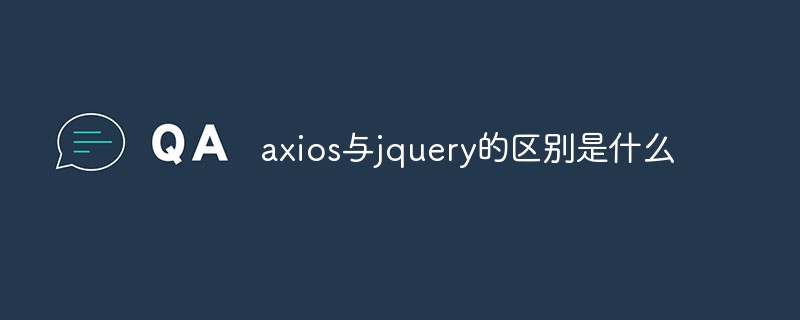 axios与jquery的区别是什么Apr 20, 2022 pm 06:18 PM
axios与jquery的区别是什么Apr 20, 2022 pm 06:18 PM区别:1、axios是一个异步请求框架,用于封装底层的XMLHttpRequest,而jquery是一个JavaScript库,只是顺便封装了dom操作;2、axios是基于承诺对象的,可以用承诺对象中的方法,而jquery不基于承诺对象。
 jquery怎么修改min-height样式Apr 20, 2022 pm 12:19 PM
jquery怎么修改min-height样式Apr 20, 2022 pm 12:19 PM修改方法:1、用css()设置新样式,语法“$(元素).css("min-height","新值")”;2、用attr(),通过设置style属性来添加新样式,语法“$(元素).attr("style","min-height:新值")”。
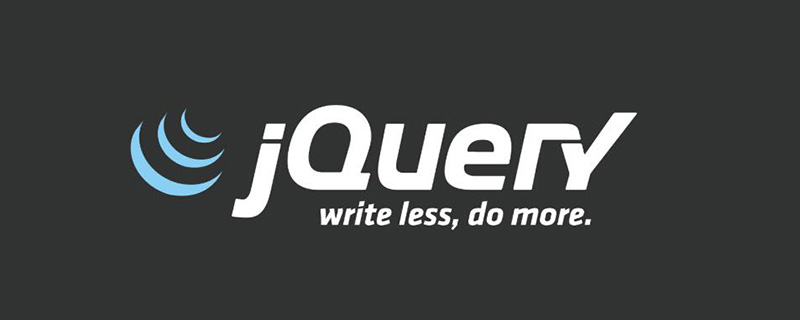 jquery怎么在body中增加元素Apr 22, 2022 am 11:13 AM
jquery怎么在body中增加元素Apr 22, 2022 am 11:13 AM增加元素的方法:1、用append(),语法“$("body").append(新元素)”,可向body内部的末尾处增加元素;2、用prepend(),语法“$("body").prepend(新元素)”,可向body内部的开始处增加元素。
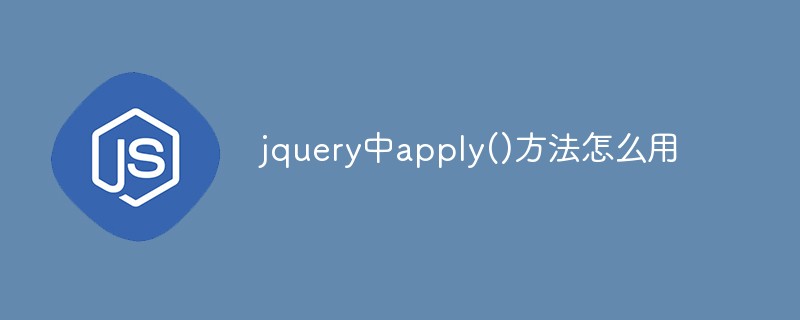 jquery中apply()方法怎么用Apr 24, 2022 pm 05:35 PM
jquery中apply()方法怎么用Apr 24, 2022 pm 05:35 PM在jquery中,apply()方法用于改变this指向,使用另一个对象替换当前对象,是应用某一对象的一个方法,语法为“apply(thisobj,[argarray])”;参数argarray表示的是以数组的形式进行传递。
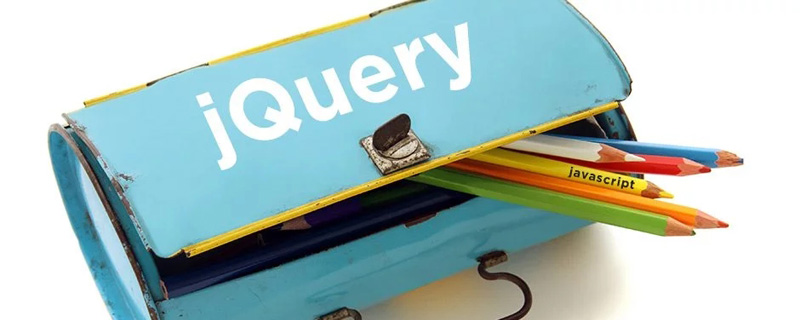 jquery怎么删除div内所有子元素Apr 21, 2022 pm 07:08 PM
jquery怎么删除div内所有子元素Apr 21, 2022 pm 07:08 PM删除方法:1、用empty(),语法“$("div").empty();”,可删除所有子节点和内容;2、用children()和remove(),语法“$("div").children().remove();”,只删除子元素,不删除内容。
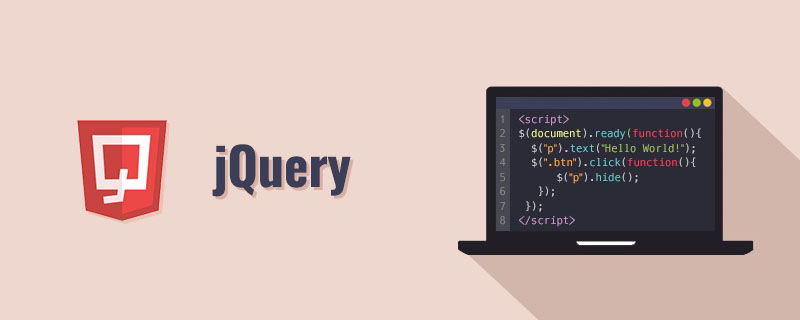 jquery怎么去掉只读属性Apr 20, 2022 pm 07:55 PM
jquery怎么去掉只读属性Apr 20, 2022 pm 07:55 PM去掉方法:1、用“$(selector).removeAttr("readonly")”语句删除readonly属性;2、用“$(selector).attr("readonly",false)”将readonly属性的值设置为false。
 jquery on()有几个参数Apr 21, 2022 am 11:29 AM
jquery on()有几个参数Apr 21, 2022 am 11:29 AMon()方法有4个参数:1、第一个参数不可省略,规定要从被选元素添加的一个或多个事件或命名空间;2、第二个参数可省略,规定元素的事件处理程序;3、第三个参数可省略,规定传递到函数的额外数据;4、第四个参数可省略,规定当事件发生时运行的函数。


Hot AI Tools

Undresser.AI Undress
AI-powered app for creating realistic nude photos

AI Clothes Remover
Online AI tool for removing clothes from photos.

Undress AI Tool
Undress images for free

Clothoff.io
AI clothes remover

AI Hentai Generator
Generate AI Hentai for free.

Hot Article

Hot Tools

Dreamweaver Mac version
Visual web development tools

mPDF
mPDF is a PHP library that can generate PDF files from UTF-8 encoded HTML. The original author, Ian Back, wrote mPDF to output PDF files "on the fly" from his website and handle different languages. It is slower than original scripts like HTML2FPDF and produces larger files when using Unicode fonts, but supports CSS styles etc. and has a lot of enhancements. Supports almost all languages, including RTL (Arabic and Hebrew) and CJK (Chinese, Japanese and Korean). Supports nested block-level elements (such as P, DIV),

PhpStorm Mac version
The latest (2018.2.1) professional PHP integrated development tool

SublimeText3 Chinese version
Chinese version, very easy to use

MinGW - Minimalist GNU for Windows
This project is in the process of being migrated to osdn.net/projects/mingw, you can continue to follow us there. MinGW: A native Windows port of the GNU Compiler Collection (GCC), freely distributable import libraries and header files for building native Windows applications; includes extensions to the MSVC runtime to support C99 functionality. All MinGW software can run on 64-bit Windows platforms.






